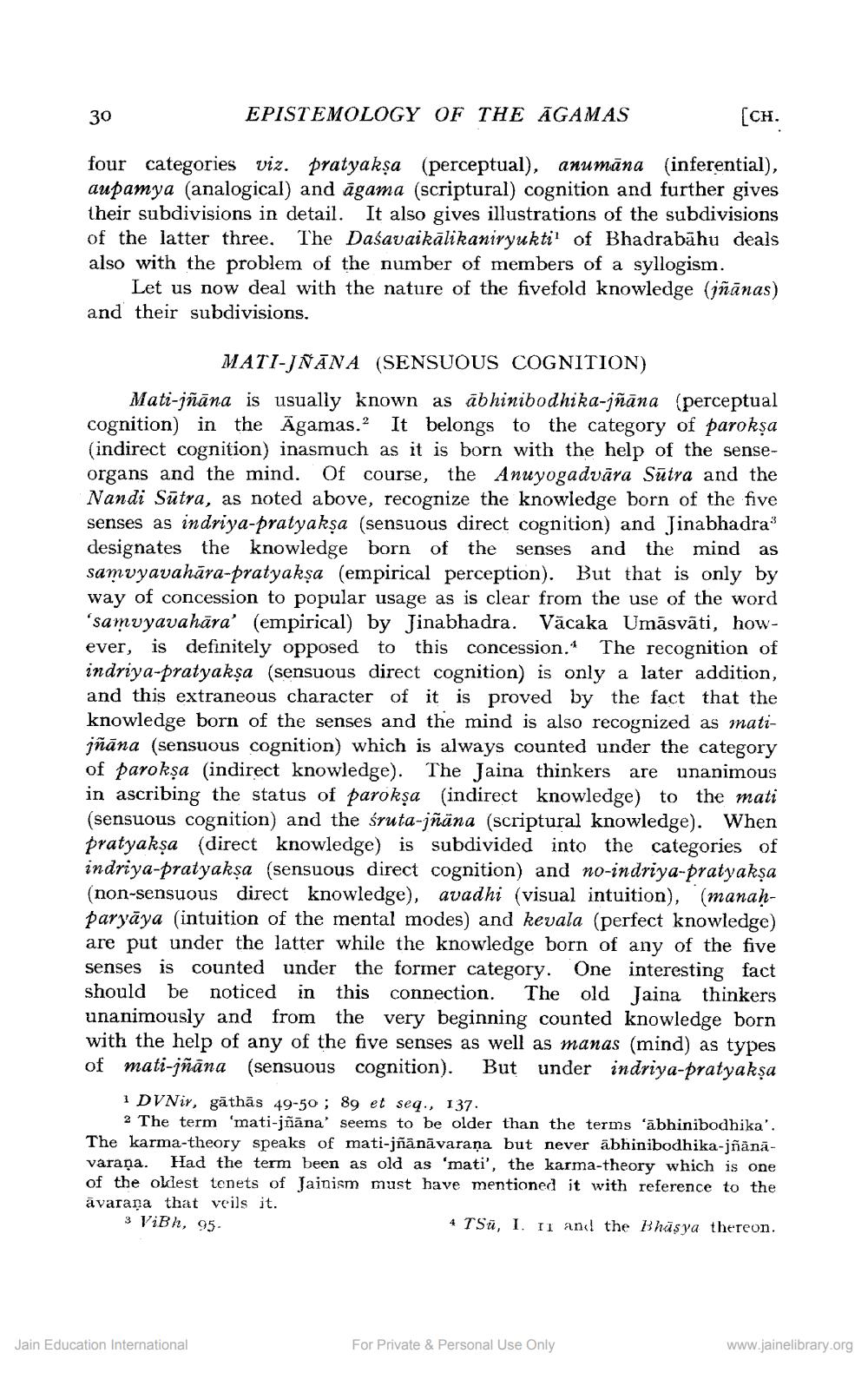________________
30
EPISTEMOLOGY OF THE AGAMAS
[CH.
four categories viz. pratyakşa (perceptual), anumāna (inferential), aupamya (analogical) and agama (scriptural) cognition and further gives their subdivisions in detail. It also gives illustrations of the subdivisions of the latter three. The Daśavaikālikaniryuktil of Bhadrabahu deals also with the problem of the number of members of a syllogism.
Let us now deal with the nature of the fivefold knowledge (jñānas) and their subdivisions.
MATI-JÑANA (SENSUOUS COGNITION) Mati-jñāna is usually known as ābhinibodhika-jñāna (perceptual cognition) in the Agamas.2 It belongs to the category of parokşa (indirect cognition) inasmuch as it is born with the help of the senseorgans and the mind. Of course, the Anuyogadvāra Sutra and the Nandi Sūtra, as noted above, recognize the knowledge born of the five senses as indriya-pratyakşa (sensuous direct cognition) and Jinabhadra designates the knowledge born of the senses and the mind as samvyavahāra-pratyakşa (empirical perception). But that is only by way of concession to popular usage as is clear from the use of the word 'samvyavahāra' (empirical) by Jinabhadra. Vācaka Umāsvāti, however, is definitely opposed to this concession. The recognition of indriya-pratyakşa (sensuous direct cognition) is only a later addition, and this extraneous character of it is proved by the fact that the knowledge born of the senses and the mind is also recognized as matijñāna (sensuous cognition) which is always counted under the category of parokşa (indirect knowledge). The Jaina thinkers are unanimous in ascribing the status of paroksa (indirect knowledge) to the mati (sensuous cognition) and the śruta-jñāna (scriptural knowledge). When pratyakşa (direct knowledge) is subdivided into the categories of indriya-pratyakşa (sensuous direct cognition) and no-indriya-pratyakşa (non-sensuous direct knowledge), avadhi (visual intuition), (manahparyāya (intuition of the mental modes) and kevala (perfect knowledge) are put under the latter while the knowledge born of any of the five senses is counted under the former category. One interesting fact should be noticed in this connection. The old Jaina thinkers unanimously and from the very beginning counted knowledge born with the help of any of the five senses as well as manas (mind) as types of mati-jñāna (sensuous cognition). But under indriya-pratyakşa
DVNir, gathās 49-50 ; 89 et seq., 137.
2 The term 'mati-jñāna' seems to be older than the terms abhinibodhika'. The karma-theory speaks of mati-jñānāvarana but never abhinibodhika-jñānāvarana. Had the term been as old as 'mati', the karma-theory which is one of the oldest tenets of Jainism must have mentioned it with reference to the ävarana that veils it. 3 ViBh, 95.
4 TSū, I. II and the Bhüsya thereon.
Jain Education International
For Private & Personal Use Only
www.jainelibrary.org




